So which City -Breaker are you? Are you the night owl – looking to party but justifying it with a bit of ‘culture’ thrown in during the day? Or are you the history and art buff – searching out every single thing there is to be seen – but happy with a bit of distraction in the evening after a hard day’s slog about town?
Well – you are ALL welcome to Kilkenny City!
Everyone loves Kilkenny. Located about 125kms southwest of Dublin, it’s doable as a day trip from the capital but even one night is worth it to sample a bit of nightlife and maybe see some of the county as well. Small enough to explore on foot, you’ll still get your 10,000 steps in if you keep out of the pubs!!!
A Few Timeline Highlights….
🔴Kilkenny is recognised as a Norman town but there was a settlement here long before the 12th century invasion. There are records of an early Christian establishment with a monastery and cathedral dating from the 6th century.
🟢 In 1207, the then Lord of Leinster, William Marshall, granted the town a much coveted charter which would grant rights to the residents…
1. To have a law court in the town.
2.To be free of tolls, lastage, passage and pontage in all the other towns in William Marshall’s lands.
A toll was a tax charged for entering a town with goods for sale. Lastage was a charge made at fairs or markets for the right to carry goods. Passage was a charge for passing through the town with goods. Pontage was a tax for using a bridge, and went towards its upkeep.
3. The burgesses could have a merchant guild and other guilds “with those paying scot” (a tax payable to the lord).
Burgesses were those who rented burgage plots from the lord. These were long plots of ground with one end on the main street.
4.The burgesses were free to sell or rent their burgages, and were free to rent land to others who would become free tenants having equal rights with the burgesses.
5. Burgesses were to be allowed grind their corn in the lord’s mill for a reasonable toll.
6. The rent for a burgage plot was fixed at twelve pence per year.
🔵Kilkenny Castle and a series of walls were built to protect the burgesses.
🟠 By the mid 13th century, the English presence in Ireland was already perceived as being under threat – settlers had taken up Irish customs, law and language and that would not do!
In 1367, the Statutes of Kilkenny – a series of 35 Acts – were passed in Kilkenny to curb this decline.
The introduction to the Acts claim..
….now many English of the said land, forsaking the English language, manners, mode of riding, laws and usages, live and govern themselves according to the manners, fashion, and language of the Irish enemies; and also have made divers marriages and alliances between themselves and the Irish enemies aforesaid; whereby the said land, and the liege people thereof, the English language, the allegiance due to our lord the king, and the English laws there, are put in subjection and decayed…
The Acts forbade intermarriage between native English and native Irish. Also forbidden was the use of Irish names and dress. English settlers who could not speak English were required to learn the language. Irish pastimes such as hurling were to be dropped in favour of archery and lancing, etc…
🟣In 1609, King James I of England granted Kilkenny a Royal Charter, elevating it to city status.
Walkabout…..

The Castle is really the city’s main attraction. It is impressive and worth going inside for a self-guided tour but the extensive grounds are free to wander about and enjoy.
A wooden structure on the site was rebuilt in the late 12th century by William Marshall but the castle has long been associated with the Butler name. The Butlers came to Ireland in 1171 in the first wave of the Norman invasion. They earned multiple titles including Earl of Ormonde. In 1391 the 3rd Earl of Ormonde bought the castle, thus becoming ruler of the area. The family was to remain in control of the castle right up into the 20th century.
By the 1930’s, the family could no longer afford the upkeep of the castle. A massive auction, lasting several days, saw most of the contents being disposed of – on one day alone, over 6,000 books were sold. The castle remained in the hands of the family until 1967 when it was sold to the State for £50! The last Marquess of Ormonde died in 1997.
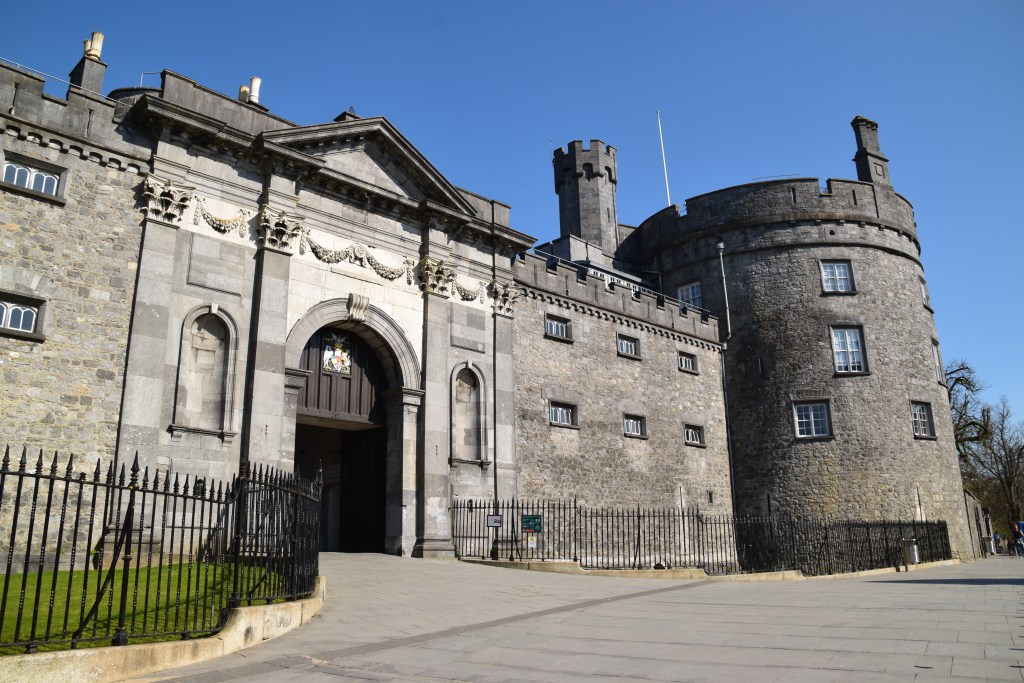



Before we go any further….
Come on the Cats! Traditionally, Kilkenny people are known as ‘The Cats‘. Needless to say, the origins of this title are shrouded in mystery, the most popular version being as follows…
In the early 1800’s, soldiers stationed in the town, sought entertainment wherever they could to alleviate boredom. One amusement was to catch two cats, tie their tails together, hang them over a washing line and watch them fight each other. The activity was banned but that didn’t stop them. One day, an officer heard the dreadful sounds of a fight in progress and came to investigate. The soldiers hadn’t enough warning and one of them, in haste, drew his sword and cut off the tails to release the cats. He hadn’t time to hide the tails so he told the officer that the cats had fought each other so aggressively they had actually eaten each other up except for the tails!
Kilkenny Cats came to describe a conflict likely to ruin both adversaries. It was however, later reclaimed by Kilkenny people as a badge of honour, promoting a fighting spirit. The Cats is the county nickname for the Kilkenny hurling team.
The Kilkenny Catwalk is a trail of 21 Kilkenny Cat sculptures which we encounter on our walk….


The Castle Yard dates from 1790. Today it is home to a number of craft and design businesses.
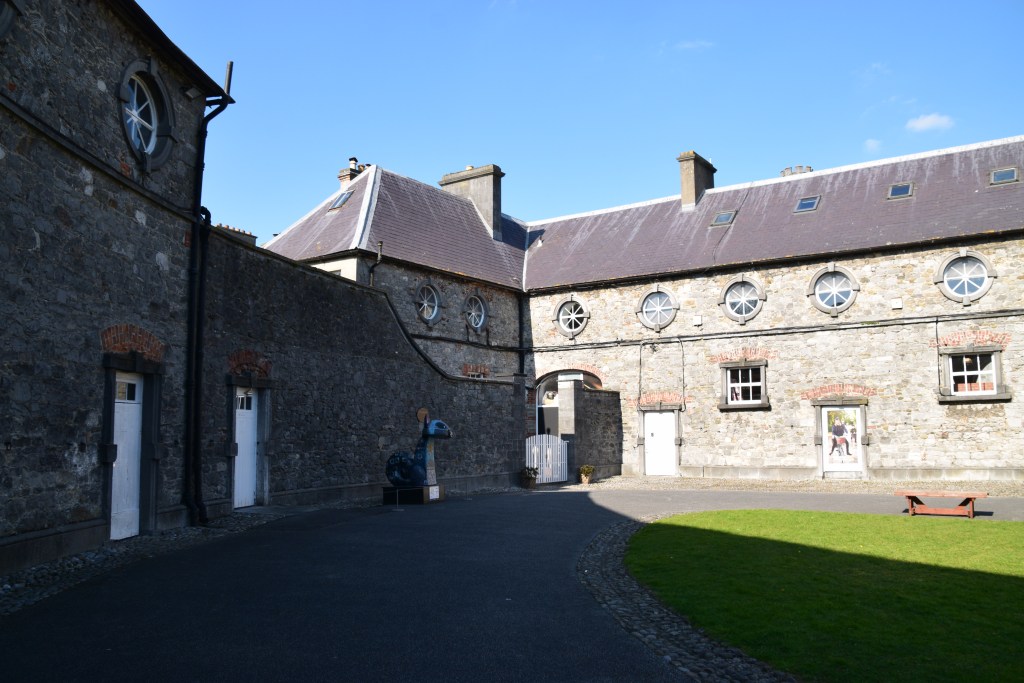


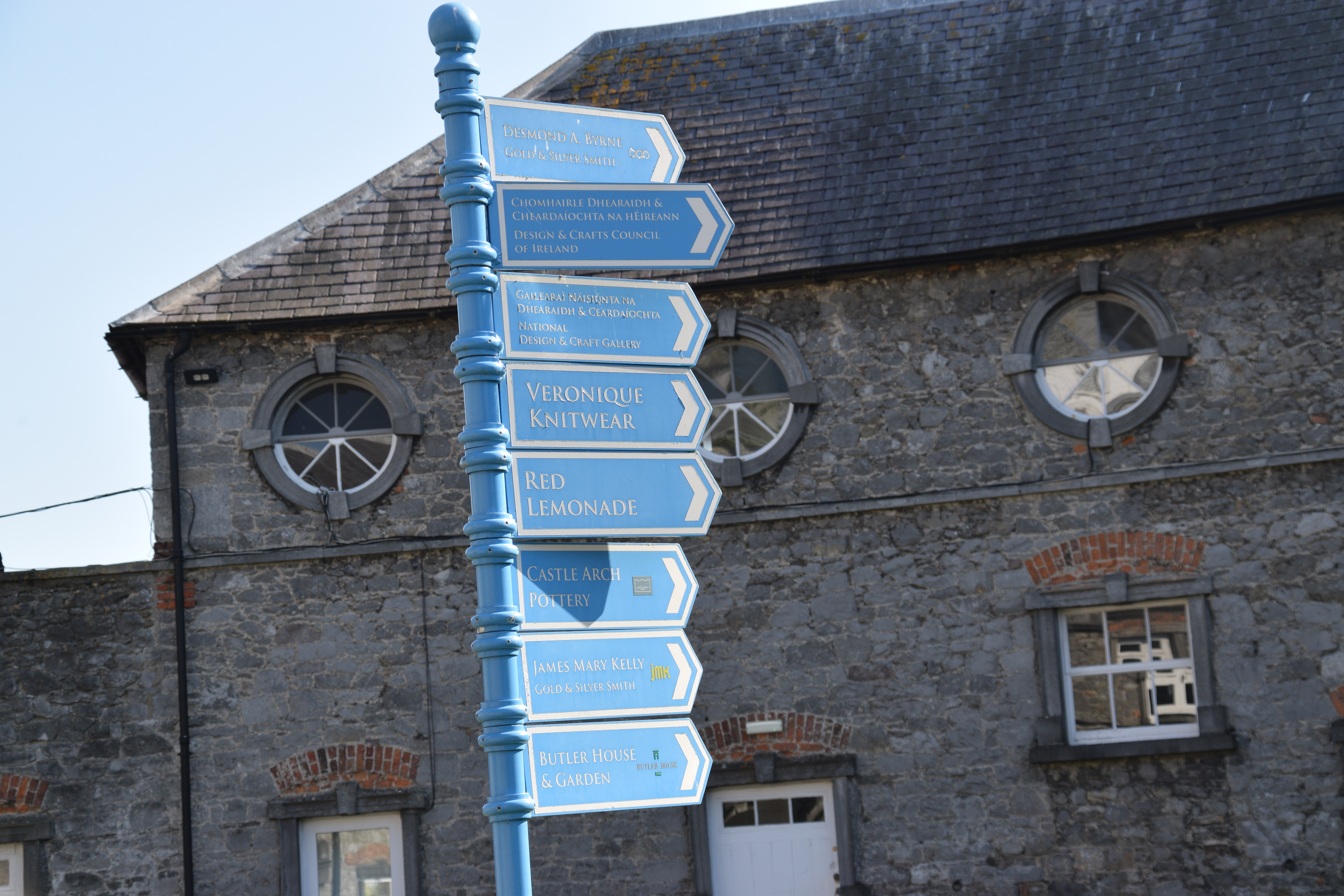
The Castle Yard links the Castle with Butler House. Built in 1786 as a Dower House ( a house intended as the residence of a widow, usually near the main house on her husband’s estate) by Walter Butler, 16th Earl of Ormonde, for his wife to live in when their son inherited the title.
The Georgian house was refurbished in the 1970s and opened as a hotel and conference centre in 1989. The gardens were fully restored in 2000.



The city was built on the river Nore – the 140km river is one of the principal rivers in the south-east.



There is a nice walkway starting here – if you have enough time, you can enjoy the full 11kms Nore Valley Walk to the village of Bennettsbridge.


At the bridge, just at the start of the walk, is a tribute to the county’s obsession – Hurling!

Life in Kilkenny revolves around Ireland’s national sport and no wonder – Kilkenny has won the All-Ireland Hurling Championship 36 times!!!
The 14 foot, 10 tonne piece of Kilkenny limestone depicts 3 hurlers – 2 of them in the Kilkenny Jersey – reaching for the sliotar (ball).

The town is Hurling mad!!!


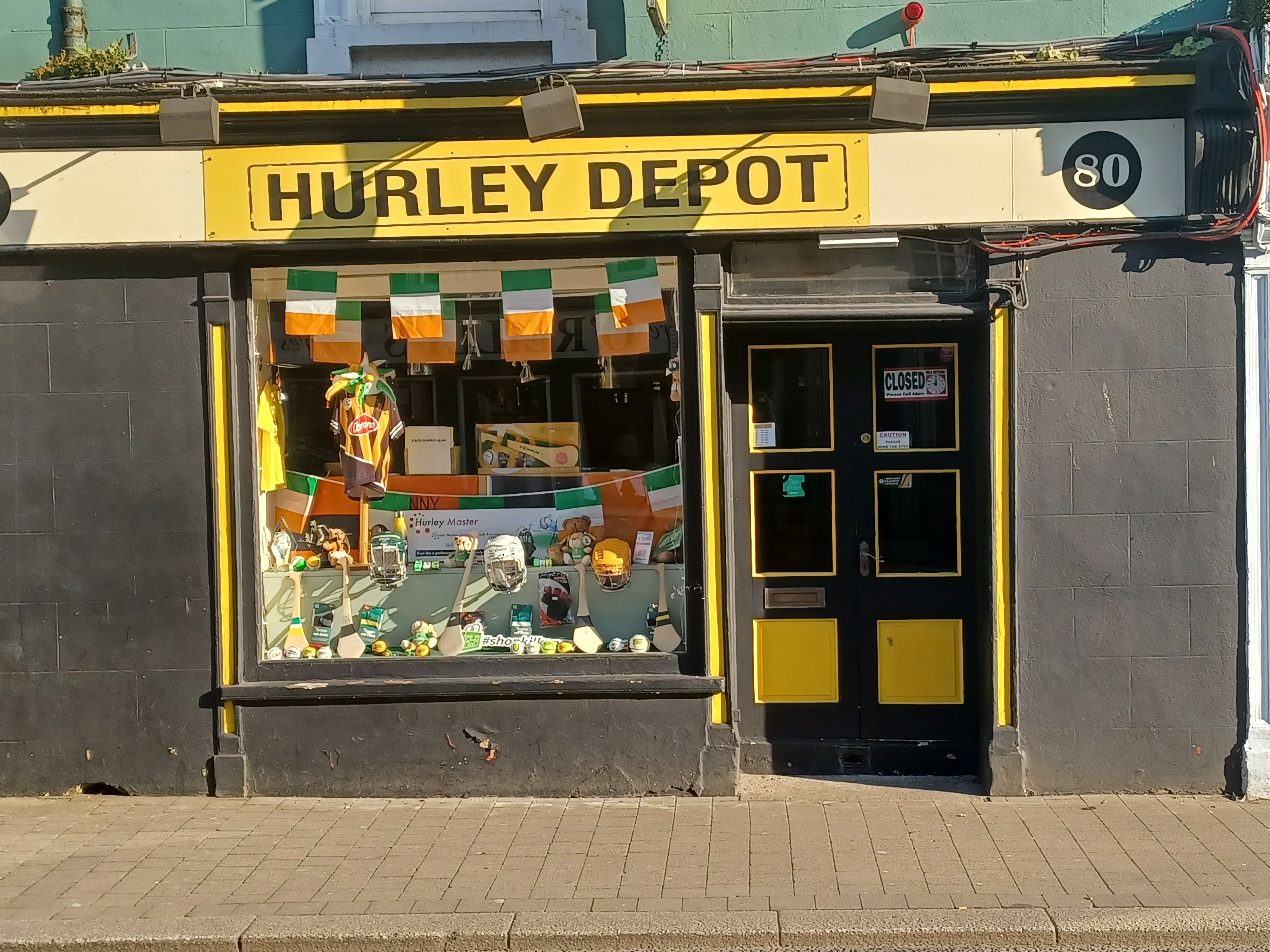


Everyone should try to get to see a match – live if possible but even on TV. Don’t worry too much about the rules – the fanatics around you will be delighted to fill you in! However, it’s no harm to show off a few facts of your own…
Hurling is considered to be the world’s oldest and fastest field sport with the ball being hit at speeds up to 100 mph. It is played with a wooden stick called a HURLEY – about 350,000 are produced in Ireland each year, supporting circa 400 jobs. Hurleys are made from ASH wood – from the base of the tree near the root. In the 1970’s, plastic became briefly fashionable but those hurleys were more likely to cause injuries so the manufacturers quickly changed back to wood. The ball is called a SLIOTAR. The word POC refers to striking the ball with the hurley. The word PUCK in Ice-Hockey is derived from POC!!
Every year, over 82,000 people attend the All-Ireland Hurling Final in Croke Park in Dublin. Tickets are like gold dust! That’s our Super Bowl!!!!
As you walk about town you’ll notice…..
Georgian Houses – they’re not just in Dublin you know!!!…..

…..street names are self explanatory….


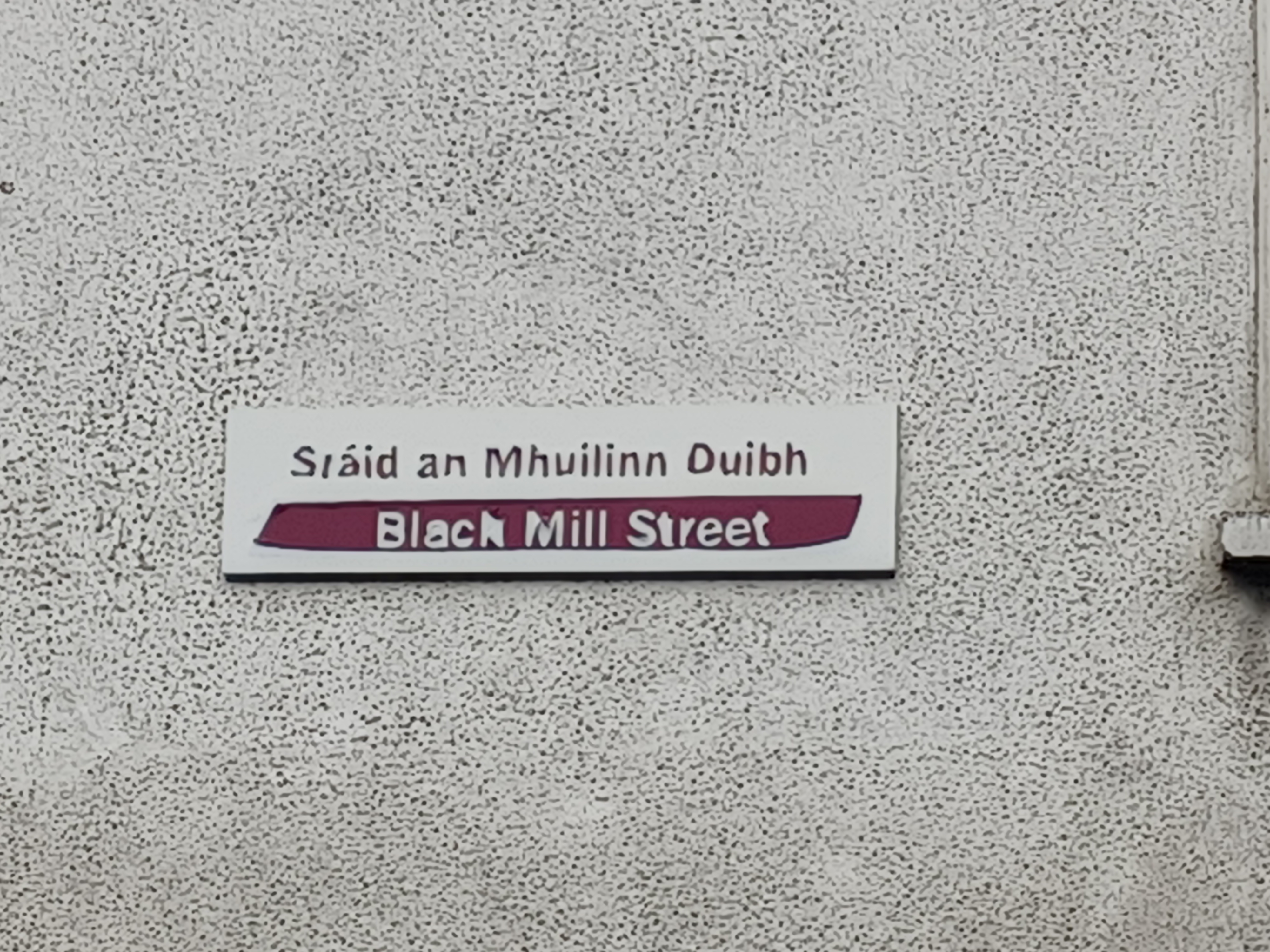
….businesses have been around for a while….



…. a lot of clocks….

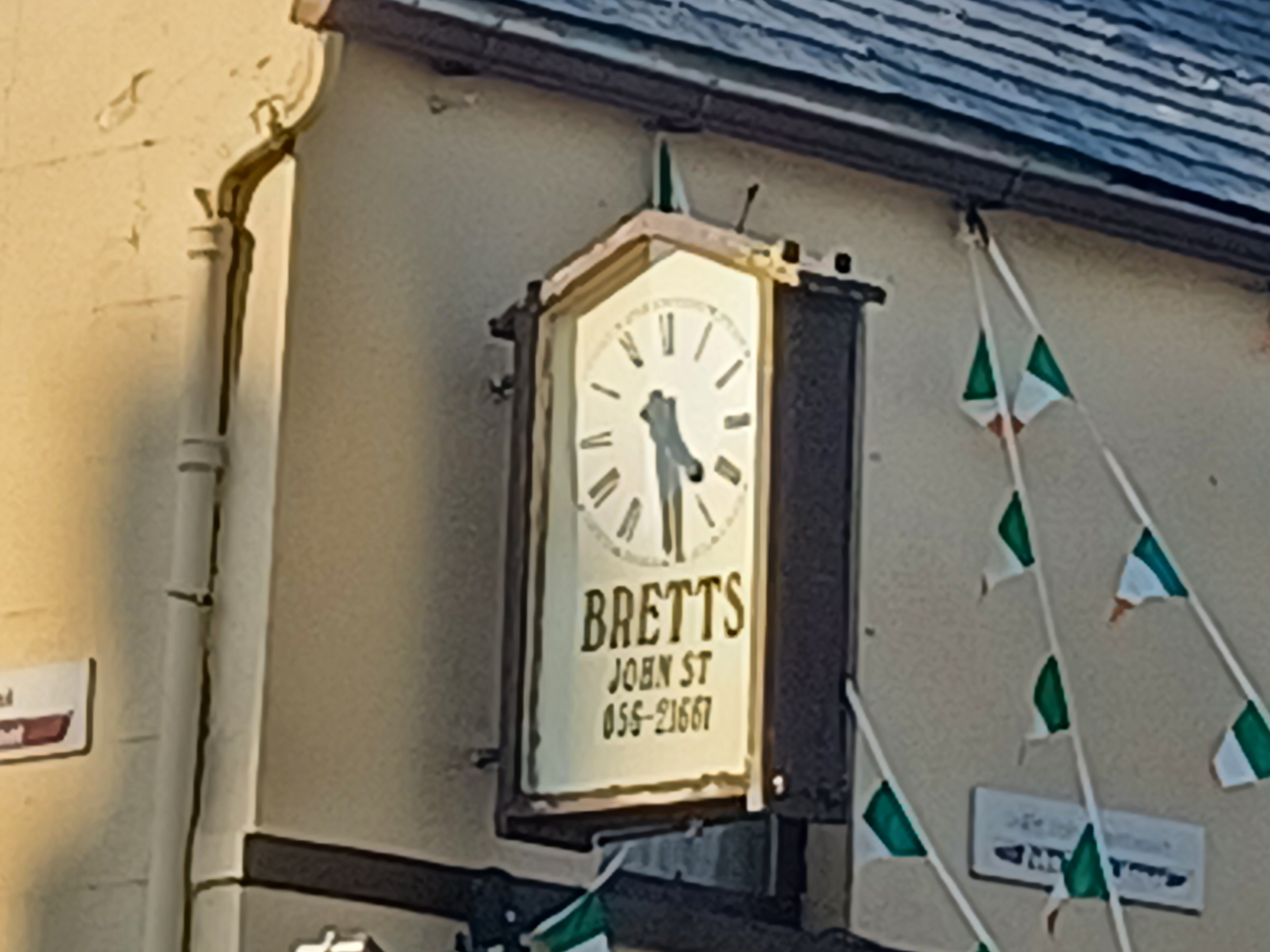

…. and a LOT of beer kegs!!

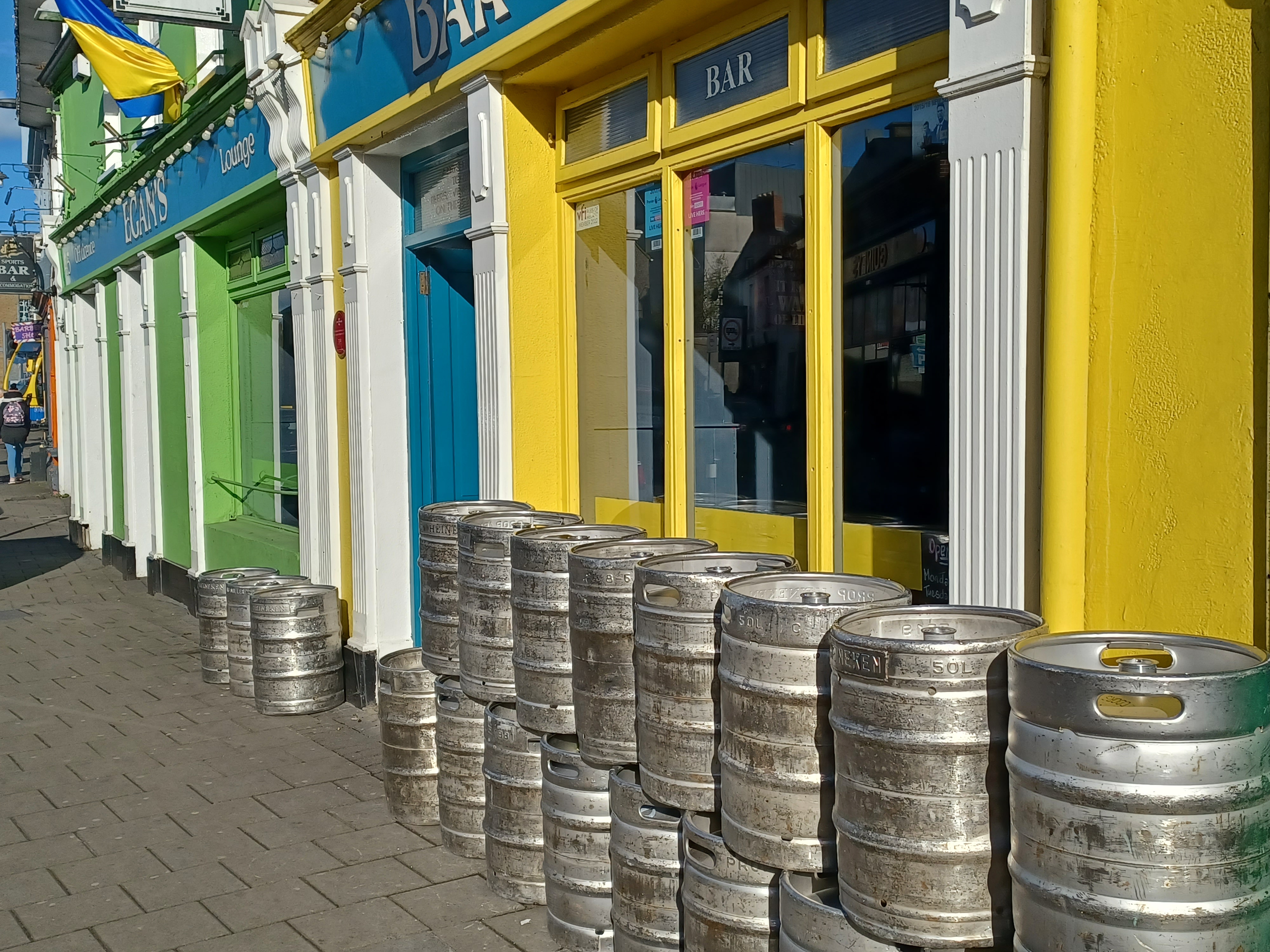
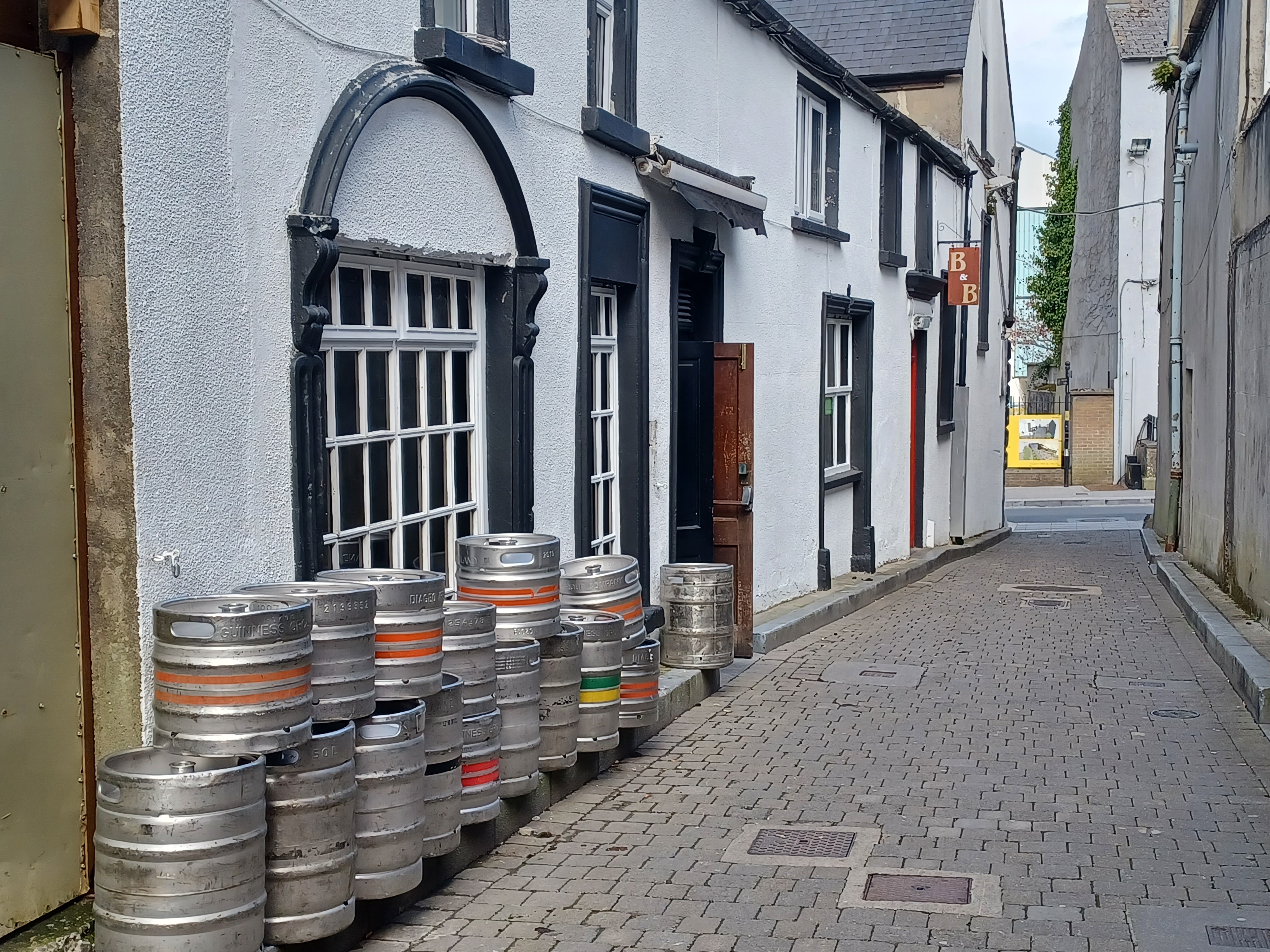
Boasting a length of over 2 miles, Kilkenny’s walls were longer than those of Dublin. Sections still exist as do some of the 9 towers. This is Talbot Tower – it would have originally been made of timber and is perched upon a small hill, giving it a good view in all directions.

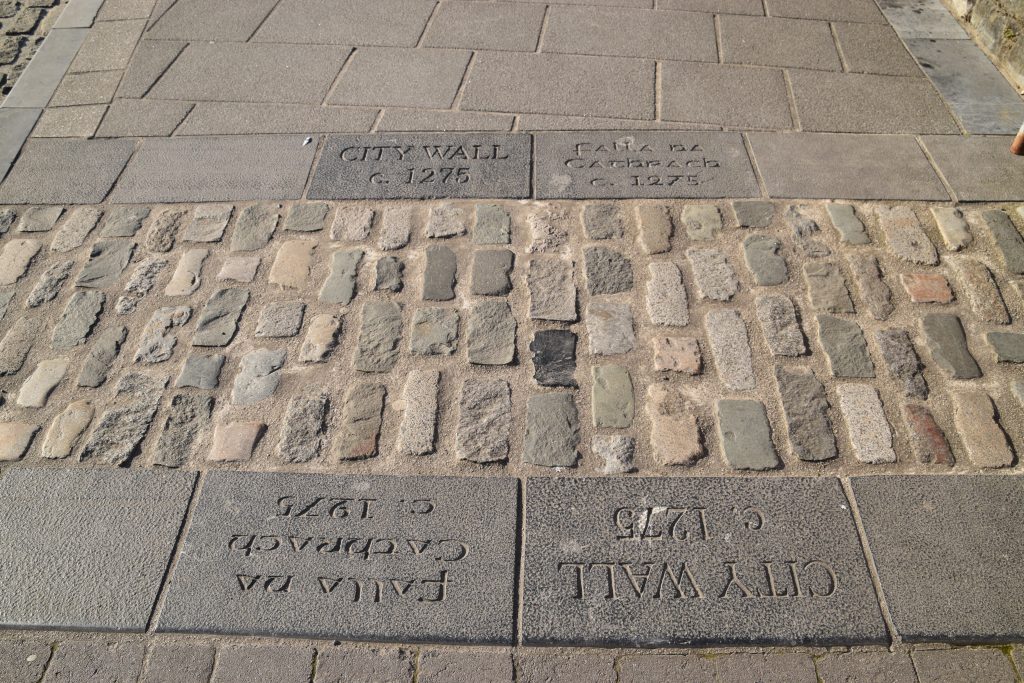

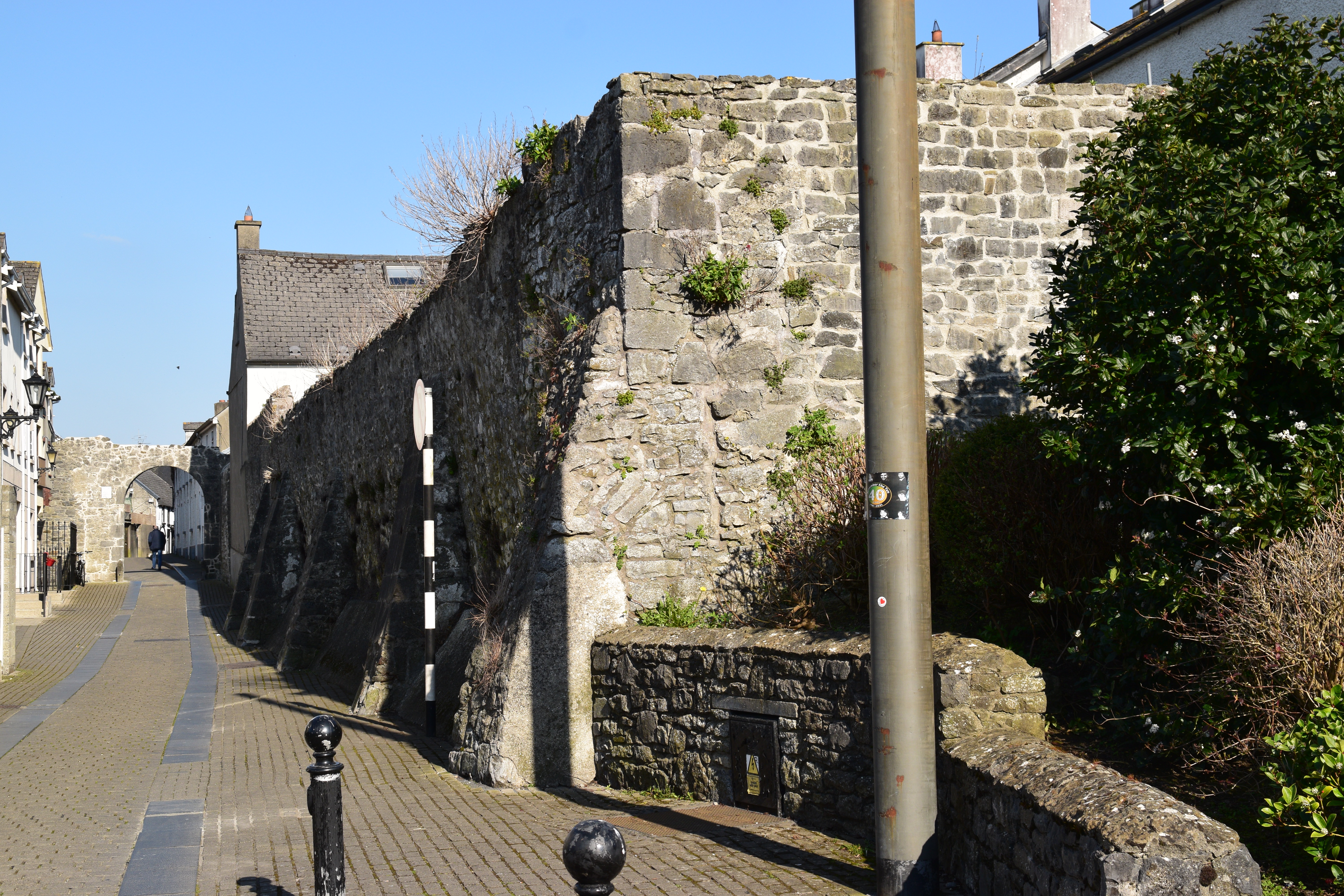
The Shee family were powerful merchants in the town and in 1582 they created the Alms House to accommodate twelve poor persons.
The Tudor house was divided in two with 6 females on the upper floor and 6 males on the ground floor. They each had their own cubicle and were fed by the Shee family. It operated as an Alms house right up to 1830.

This is The Tholsel – an administrative building for collecting tolls and taxes. It dates from 1761 and has also served as customs house, courthouse and guildhall. Nowadays it serves as City Hall…



Rothe House is a 16th century merchant’s townhouse complex on the main street. It’s actually made up of 3 houses, 3 courtyards and a large garden. I suppose he needed the space – for his 11 children!!


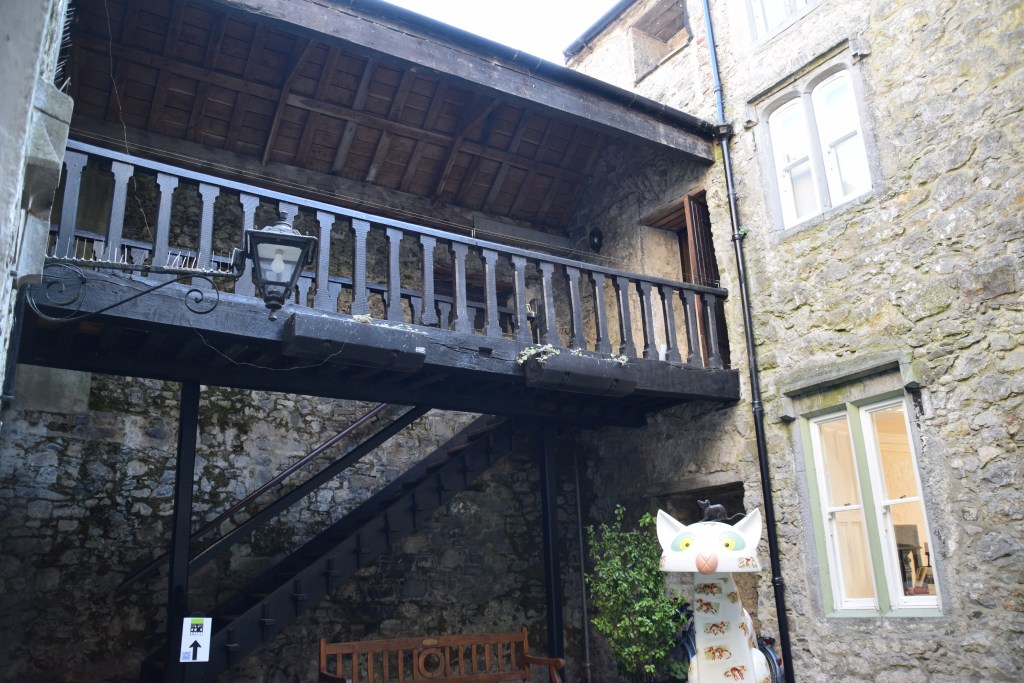
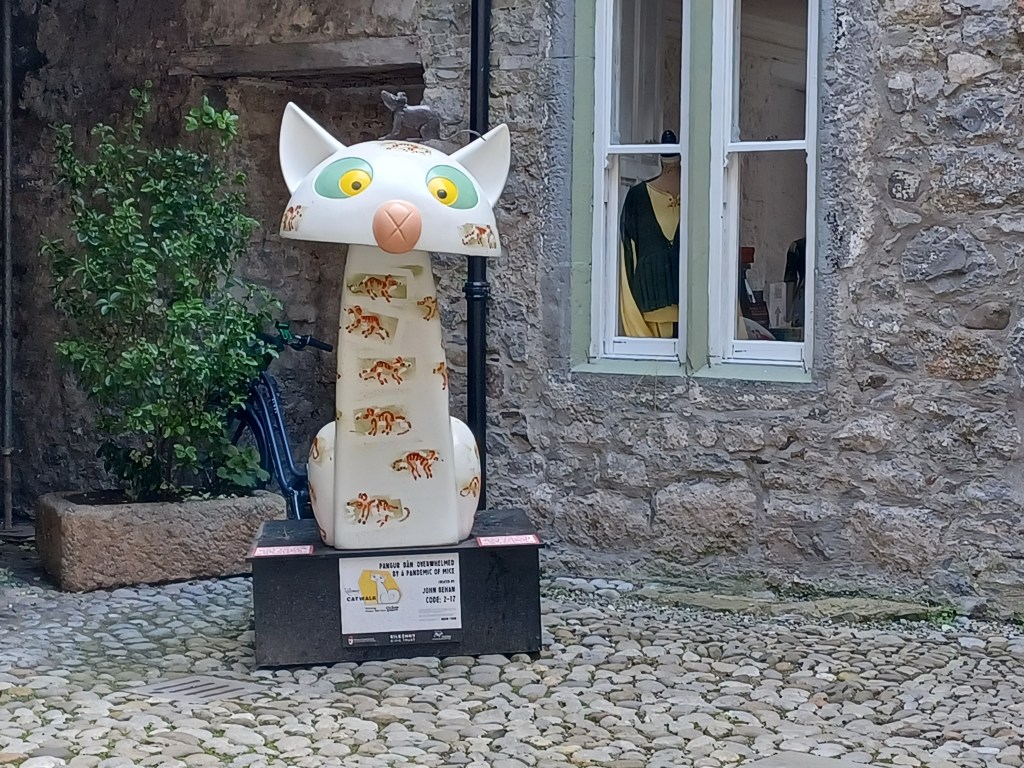
The Courthouse, formerly know as Grace’s Castle, is built on what was originally a town house of the wealthy Grace family. They leased the building to the Crown in 1566 for use as a gaol. It was converted to a courthouse around 1792 and remodeled and extended a few times since then.

I hope by now you are getting a good sense of Kilkenny’s rich medieval centre. You can see why this stretch has been branded the Medieval Mile – stretching from the Castle, through town, as far as the Cathedral.
St Mary’s Church is home to the Medieval Mile Museum


The Black Abbey is a 13th century Dominican church founded by the Black Friars. Its worth popping in to see the stained glass.



There isn’t a lot known about St. Canice. Canice / Cainnech was supposedly born in Glengiven – near Derry – in 515 or 516. He was ordained in Wales and preached in Ireland and Scotland.
Kilkenny was one of the last parts of Ireland to convert to Christianity. According to tradition, in 597, Cainnech led a Christian force here to eliminate the last of Druidic rule in Ireland. He was successful by all accounts and founded a monastery while he was here.
KILKENNY comes from the Irish Cill Chainnigh, meaning Church of Cainnech/Canice
In the 13th century, a cathedral was built on the site of the old monastic settlement. St. Canice’s is known for its beautiful stained glass. The Round Tower predates the cathedral and has two claims to fame – it is the oldest standing structure in the city and is one of only two round towers in the country that can be accessed and climbed.
(Combination Cathedral and Tower €7. Last admission in March was 3.30pm so we didn’t get inside either)


The city is not all about public buildings and churches of course. It’s true charm lies in the streets.


Main streets are linked by small alleyways known as slips. This is the Butter Slip, where butter vendors used to sell their produce from the 1600’s on.

Joseph Evans was the descendent of an English soldier who had come to Ireland with Oliver Cromwell and been granted land in Kilkenny.
Evans willed his entire fortune to charitable concerns including a school, support for orphans, apprenticeships and marriage dowries for the poor and a home for impoverished domestic servants. Evans’ Home was built in 1818 on the former site of a military barracks and was to provide a home for twelve men and twelve women. He stipulated that ‘in the selection of the objects and inmates of which asylum, a preference be given to protestants’. As the local protestant community declined, the Home admitted increasing numbers of Catholics and was well enough financed to survive as a care home until 1996!
Evans’ Home came into Council ownership in 1997 and, after musing over several proposals for years, agreement was reached to transform the house into the Butler Gallery as part of the development of a cultural quarter.



Wolfwalkers – the Oscar nominated movie – was made by a small animation company in Kilkenny

In 1710, John Smithwick and Richard Cole started up Smithwick’s and Sons Brewing Company. The business remained in Kilkenny right up to 2013 when it moved to Dublin under the Diageo umbrella.

The Smithwick’s Experience on the main street is a hugely popular attraction where you can learn all about the brewing process and sample their ales.
(Note – As of April, 2022, the attraction is still temporarily closed)

Warning – Ask for Smithicks in a pub – never pronounce the W – or everyone will know you’re a tourist!!!!!!!!!

Dame Alice Kyteler, the daughter of a Norman banker was born here in 1263. Having worked her way through 4 husbands and amassing a considerable fortune, she was the first person in Ireland to be accused of witchcraft. She evaded capture and fled to England but her servant Petronella wasn’t so lucky – she was flogged and burned at the stake.
Everyone ends up in Kytelers for a pint. This was her original house where she lived as a moneylender and innkeeper.
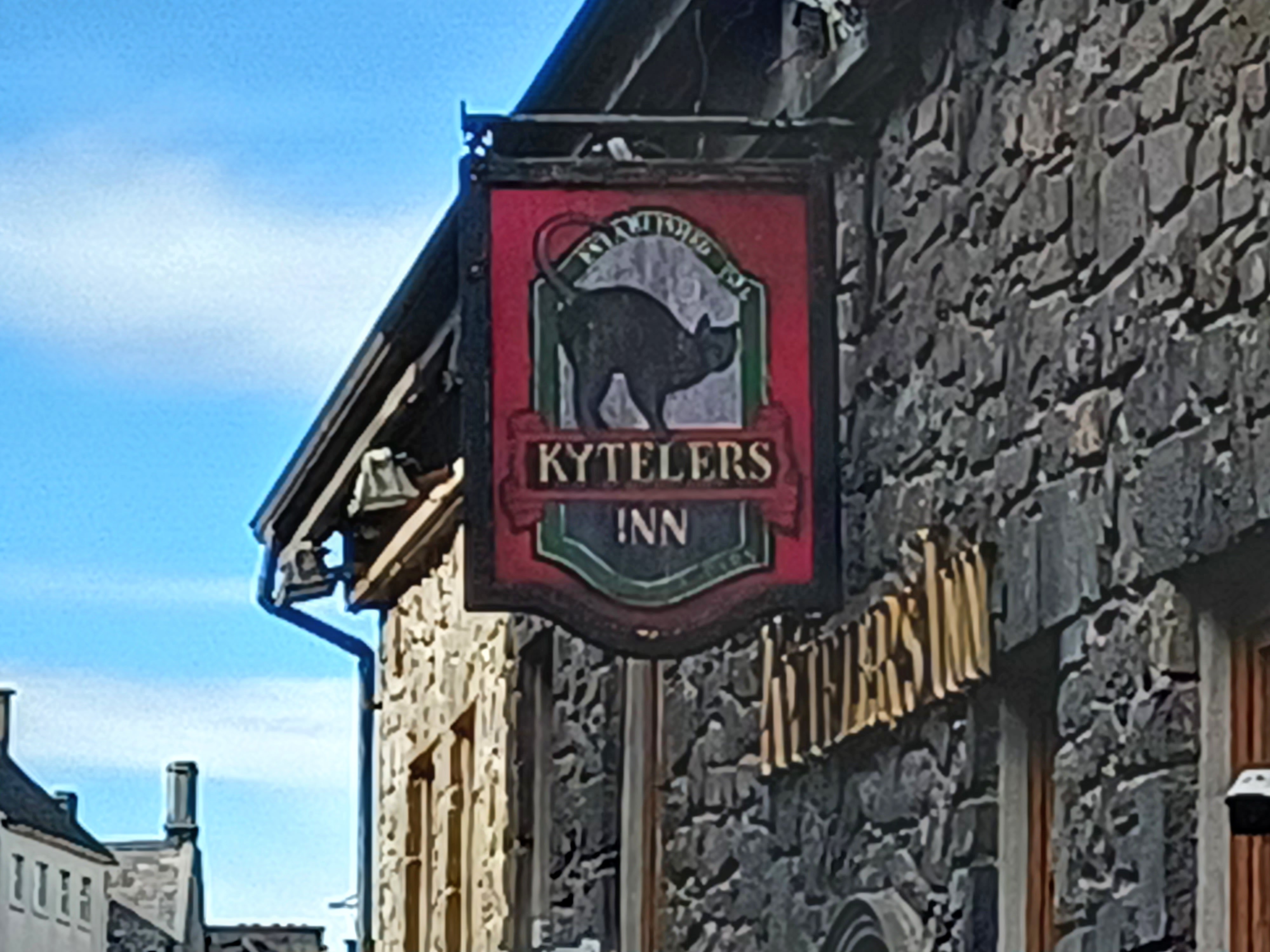
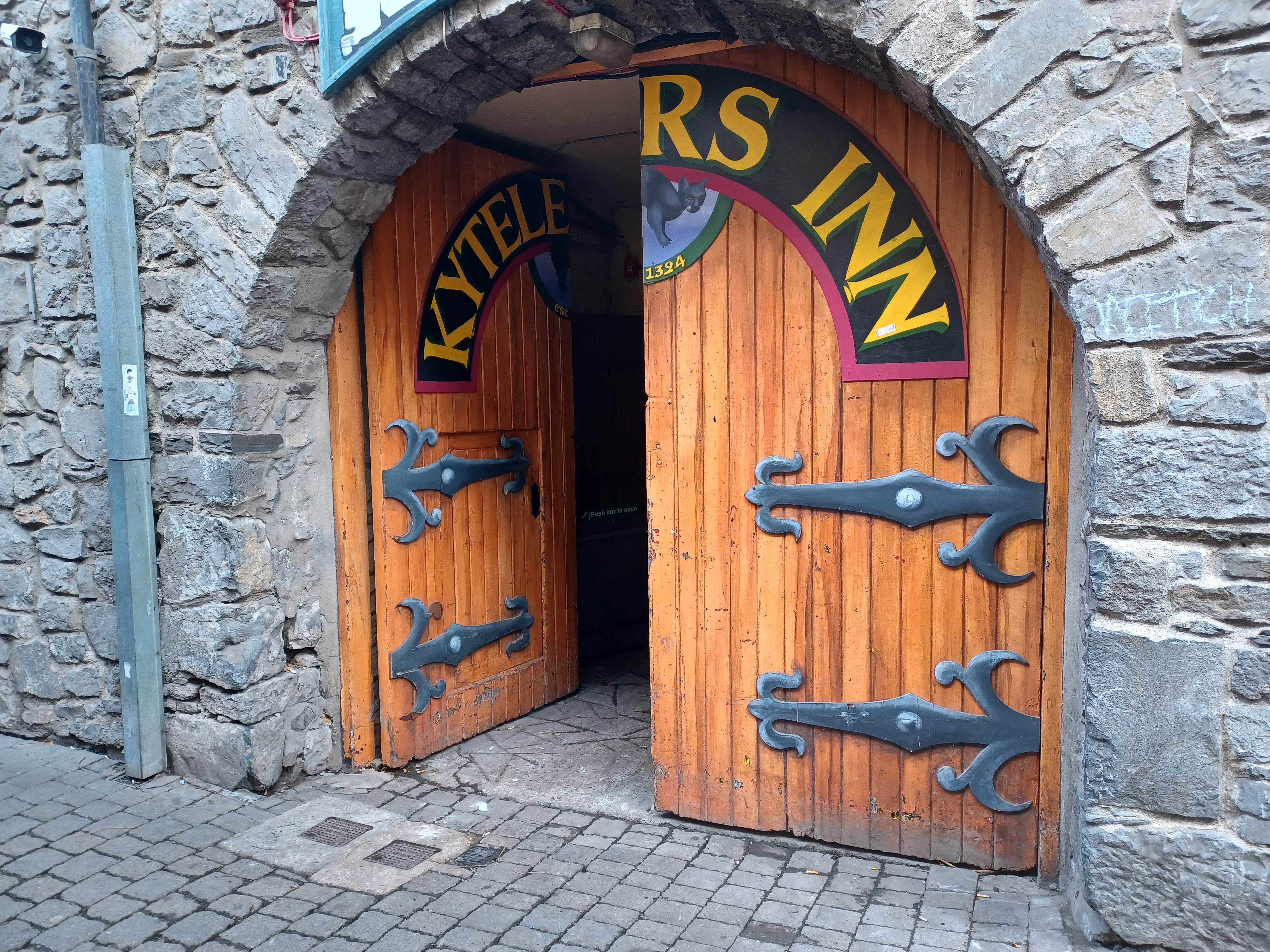


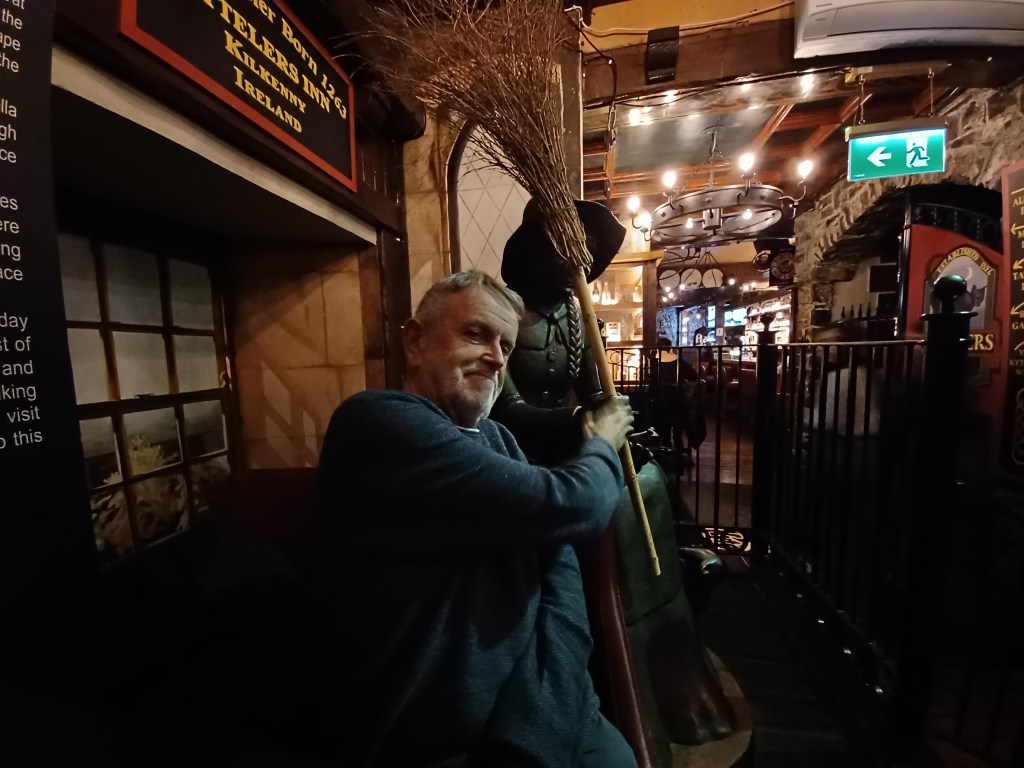
You won’t be stuck for a coffee……




….or you might prefer Afternoon Tea in Langtons.

When you’re hungry, there’s everything on offer in town, from Michelin Star to pub grub. And, remember – this is a party town – you’re never far from a cocktail or a pint!
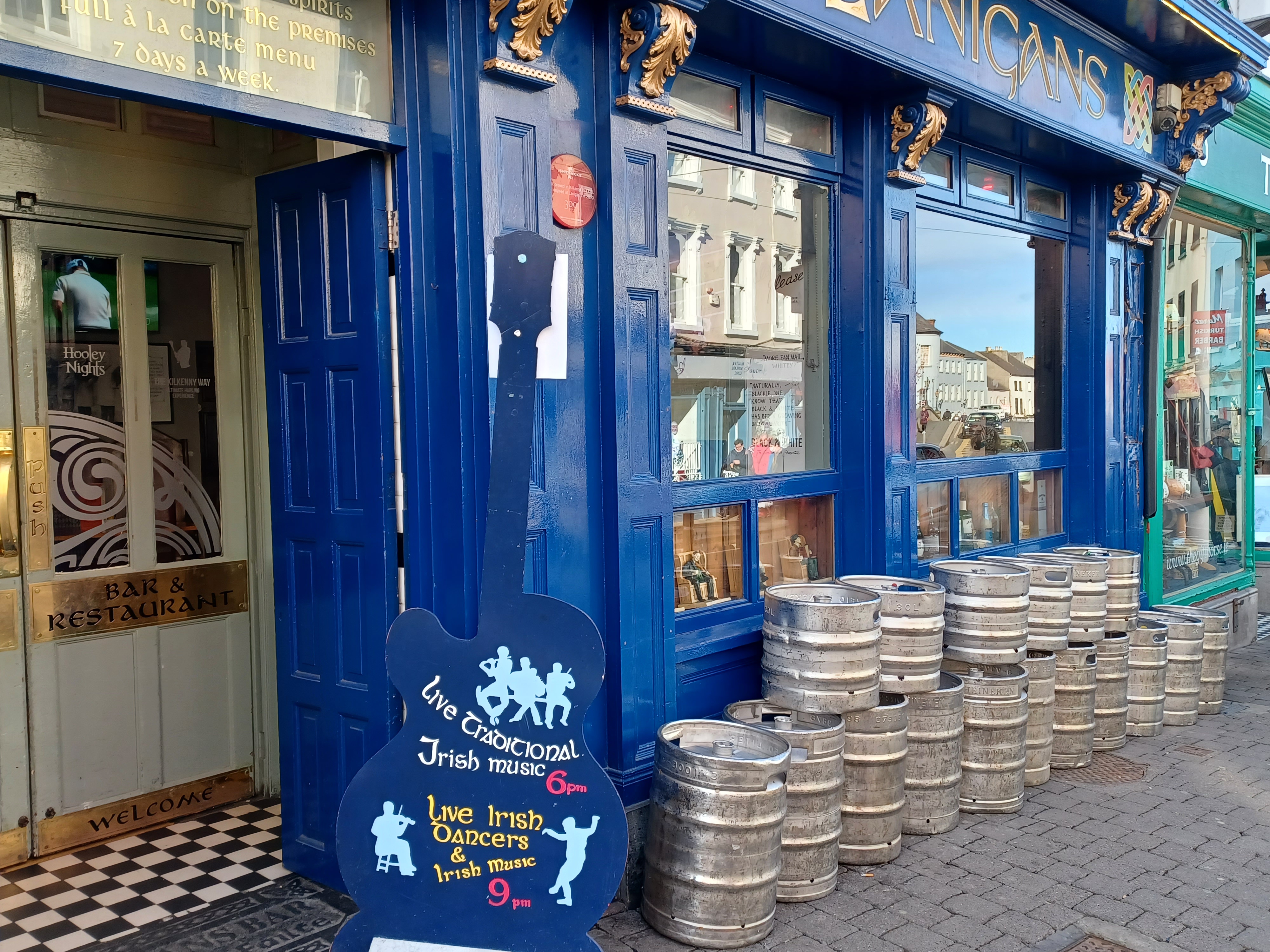
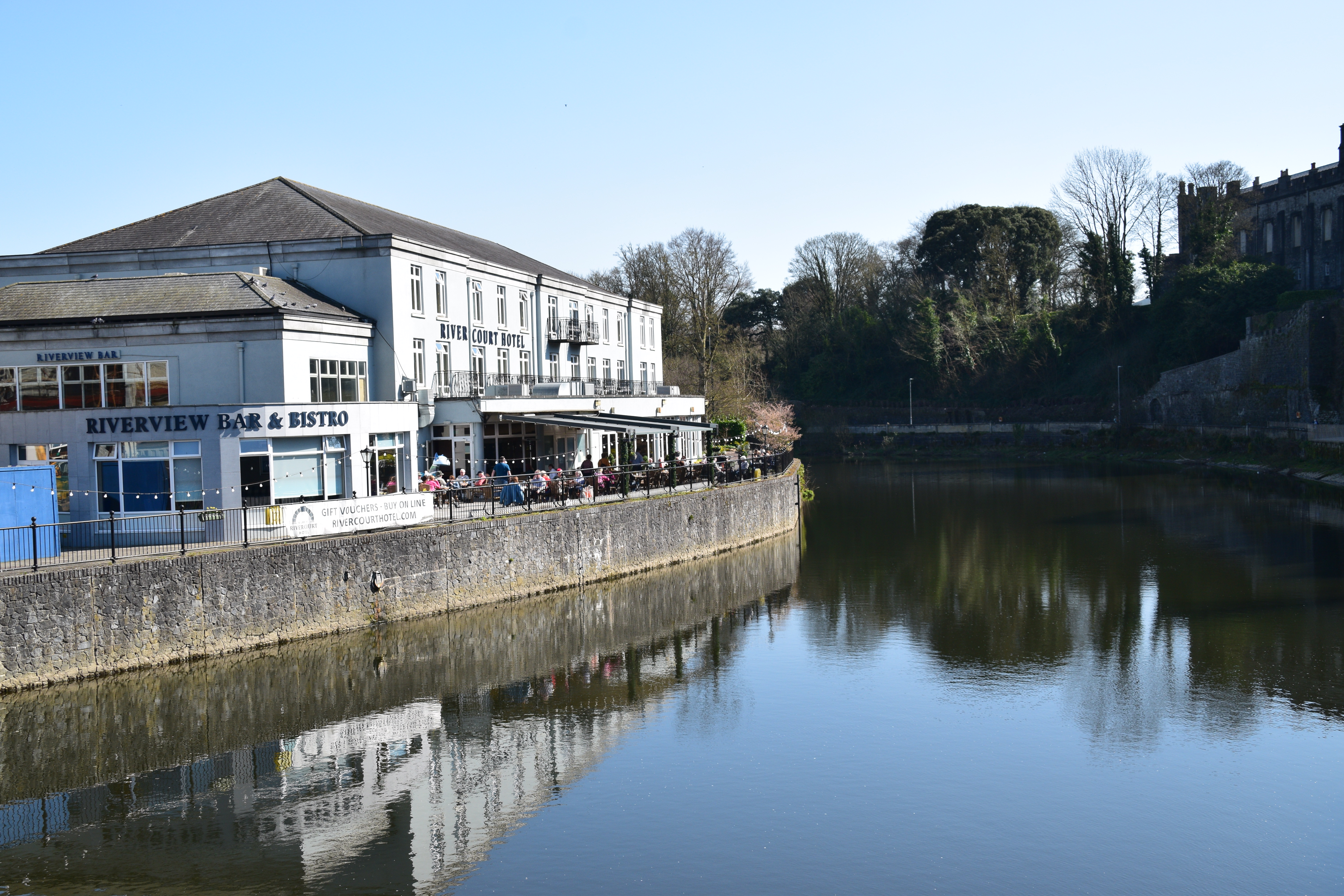




A familiar sight – arriving for the craic!!
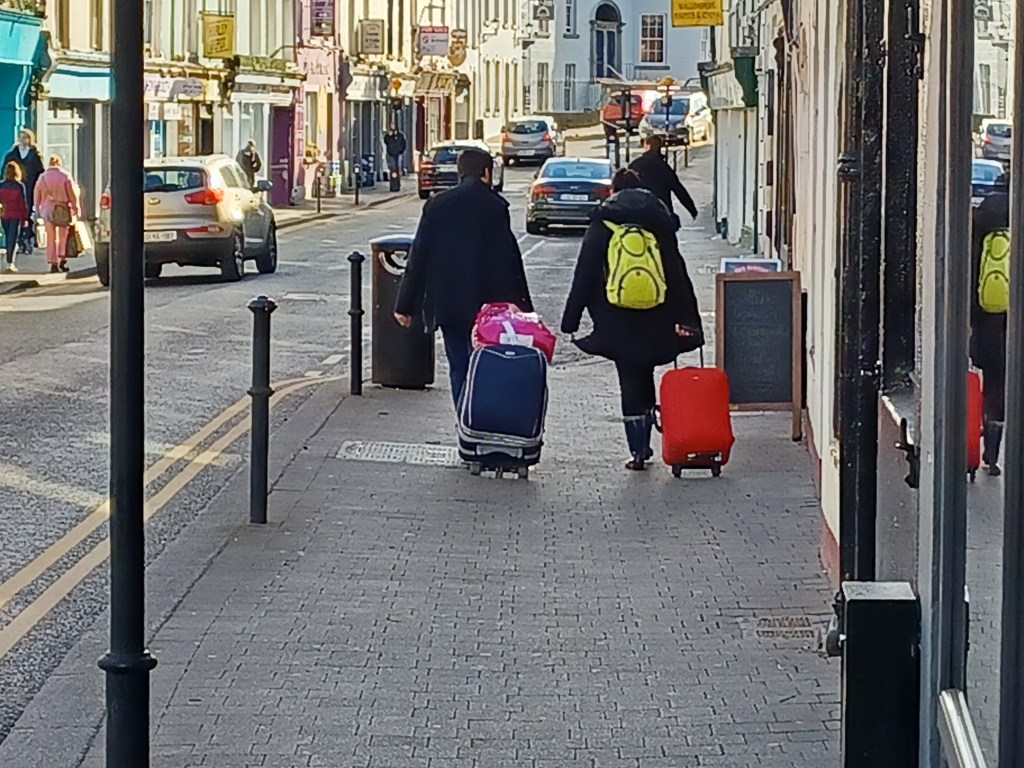
I’ll finish up with my favourite cat….

Why this one?
Look at his name!!


Before you go:
Here are a few more Irish Postcards…


You are a one woman tourism oracle for Ireland! I doubt I’ll get to the U.K from Australia again, and reading your blog, I greatly regret not visiting Ireland in the 1970’s. It is the principal country of my ancestry in which ever branch of my family I look, but ‘the troubles’ were on, so I feared going there. I’ll recommend your blog to anyone I know going to Ireland. Have already recommended your London walk to a few people.
I started this blog to record my travels abroad – primarily for myself as I was forgetting more than I was remembering!! I reckon that pre Covid I could count on one hand the number of posts about Ireland that I put together. I can’t believe how much I’ve rediscovered about my own country these past two years!!
Ireland was constantly in the news during the 70s – for all the wrong reasons alas…. For those who did decide to venture this far, it was an expensive place to get to unless you took the boat from England – then there was the infrastructure once you got here – dreadful! We’ve come a long way!!
Thanks a mil Therese for spreading the word among your friends – much appreciated. XXXM
I’ve travelled extensively, but never kept a diary .. but have always had my camera at my side. Covid spurred me on to begin a travel blog. So thousands of photos. Pleased that I did it. Keeps me entertained, and busy with the writing and researching.
This blog kept me sane during Covid! I wasn’t travelling of course so had to become a bit more creative with ideas but it’s been a wonderful occupation and distraction – and finally a record of my travels of course.
Same for me. I’m printing out mine and eventually will have them put together by a book binder.
Wonderful idea! Actually the seeds of a Christmas pressie are beginning to sow here….
This looks like my sort of town! The castle looks a bit too ‘whole’ for me (I like more ruins and character!) but the Medieval Mile and all the old buildings and slips look really photogenic, as do the cats of course! Add in great coffeee shops, great pubs and good food – what more do you need for a city break?!
I’m with you re the castle – give me a pile of stones any day! Yes – it ticks all the boxes for a mini-break and is very reachable from Dublin… XXXMarie
I agree with Sarah. It’s on the list!
Good stuff!!!!
Marie. You did Kilkenny proud … one of my favour places to visit . Proud Kilkenny people are a tonic .. p.s. take a trip out the Castlecomer road and visit the Dunmore caves, Jenkenstown Woods and The Discovery Park in Castlecomer . Or head to Bennetsbridge Mosses pottery , jerpoint glass, Mount Juliet etc … etc … Kilkenny , the gift that keeps giving ,,
I’m going to do the county soon all right – we’d a few days there just before Easter. The caves were closed but the Discovery Park was new to us – lovely spot and the sun shone for us!!
What a cute city. I love the bridge over the river and the Butler’s Slip the most 🙂 Maggie
The bridge is lovely. We were actually standing on it the last time we were there and noticed a table become vacant on the hotel terrace below us – I’d say we haven’t moved to fast in over 20 years!!! It was just gorgeous….. Those little slip alleys are very quaint – it’s great that so much of the place has been preserved. XXXMarie
Wow! Wish I could teleport there now and visit all these places.
Not sure about teleporting but you’ll definitely get here some day Lissy!
As usual enjoyed this post and the tome we spent in Kilkenny. Hope to make it back there or something.
I hope so too Bernie!
Kilkenny looks amazing, and I absolutely love all the cats 🙂
The Cat exhibition began last Spring I think. It was never intended as a permanent display. I hope they leave it – I think they’re great!
I am more of a history and art buff. there aren’t many museums and galleries on Ireland’s West Coast and it’s what I miss the most. Believe it or not, Marie, but after twenty years in Ireland, I haven’t still made it to Kilkenny. Hopefully, one day 🙂 Thanks for sharing and have a good day 🙂 I hope you had a lovely Easter break xxx
You’ll get there Aiva – even en route to the southeast some time – there’s a lovely Discovery Park in Castlecomer which I think Ericeira would enjoy…
Once again, I imagine this guide is way better than any other that is available. I wish I’d had it when I visited Kilkenny. It was long ago and I only recall starting up the Round Tower, getting scared and coming down again 🙁
Actually I’d love to go up the round tower… there are only 2 in the country you’re allowed climb..
beautiful town! love the cat sculptures
Me too! I hope they leave them as a permanent display…